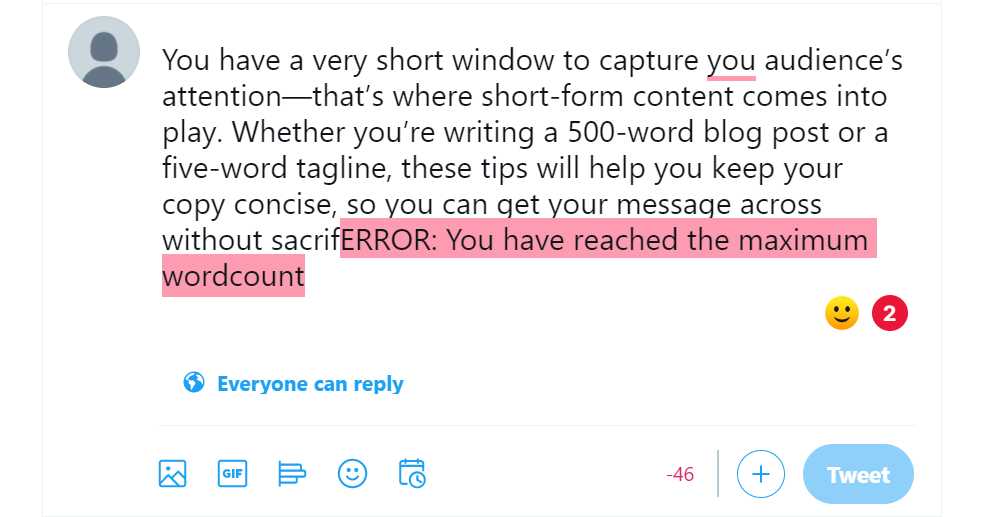6 Secrets to Short-Form Writing
Picture this: it’s a cool Friday in October and you’re in your last class of the day before a long weekend. You think you’ll get away unscathed, but then, your teacher does the unthinkable: he assigns you a 1,500-word essay due next week. You groan as you trudge out of the classroom door and ask yourself: how am I supposed to write that many words on American lit?
Somewhere along the way, however, things changed. It became easier to write in long form. It’s likely because many school systems foster an attitude that longer is better. Instead of maximum wordcounts, we have minimum wordcounts. We’re taught to be wordy from the very beginning.
But wordier isn’t always better. According to research conducted by American Venture Capitalist Mary Meeker, people only look at desktop display ads for about 1.3 seconds, and mobile ads for 1.5 seconds. That means you have a very short window to capture you audience’s attention—that’s where short-form content comes into play.
Whether you’re writing a 500-word blog post or a five-word tagline, these tips will help you keep your copy concise, so you can get your message across without sacrificing your reader’s interest:
- Start with a concept. Before you write, think about the idea you want to convey to your audience. Is it that your company can help them save money? That your product has a unique feature your competitors don’t? As you write, eliminate any copy that strays from your core concept.
- Consider wordplay. Think about what words or phrases you can easily associate with your concept. Try playing with common turns of phrase and experimenting with alliteration. Focus on phrasing that paints a clear picture in your audience’s head.
- Use stronger verbs. When you’re writing short-form content, every word counts. Focus on using bold verbs. For example, instead of writing “run quicky,” write “sprint.” It shortens your copy while also making it more engaging for your audience.
- Eliminate little words. Sometimes, there’s way to eliminate words like “a,” “the,” and “that” to shorten your copy. Try rewording your sentence to see how many small words you can eliminate.
- Add visuals. Visuals are a great way to convey meaning without lengthy text. Carefully select pictures, graphics or charts to help convey your core concept. Use text to support or build on the meaning communicated by your visual element.
- Ask for feedback. Make sure you’re conveying what you intend to convey by asking your coworkers to look at what you’ve written. They can tell you if your copy or visuals are confusing. They might also see an opportunity to make the text even pithier.
Short-form content is daunting for many people, but when done well, it can put you miles above the competition. Don’t let the difficulties deter you—start practicing your short-form content today to take your marketing to the next level.
Want more tips on short-form success? I’d love to connect with you! My contact information is below.
Connect With Rona:
Email: rvaselaar@theblissgrp.com
LinkedIn: Rona Vaselaar
